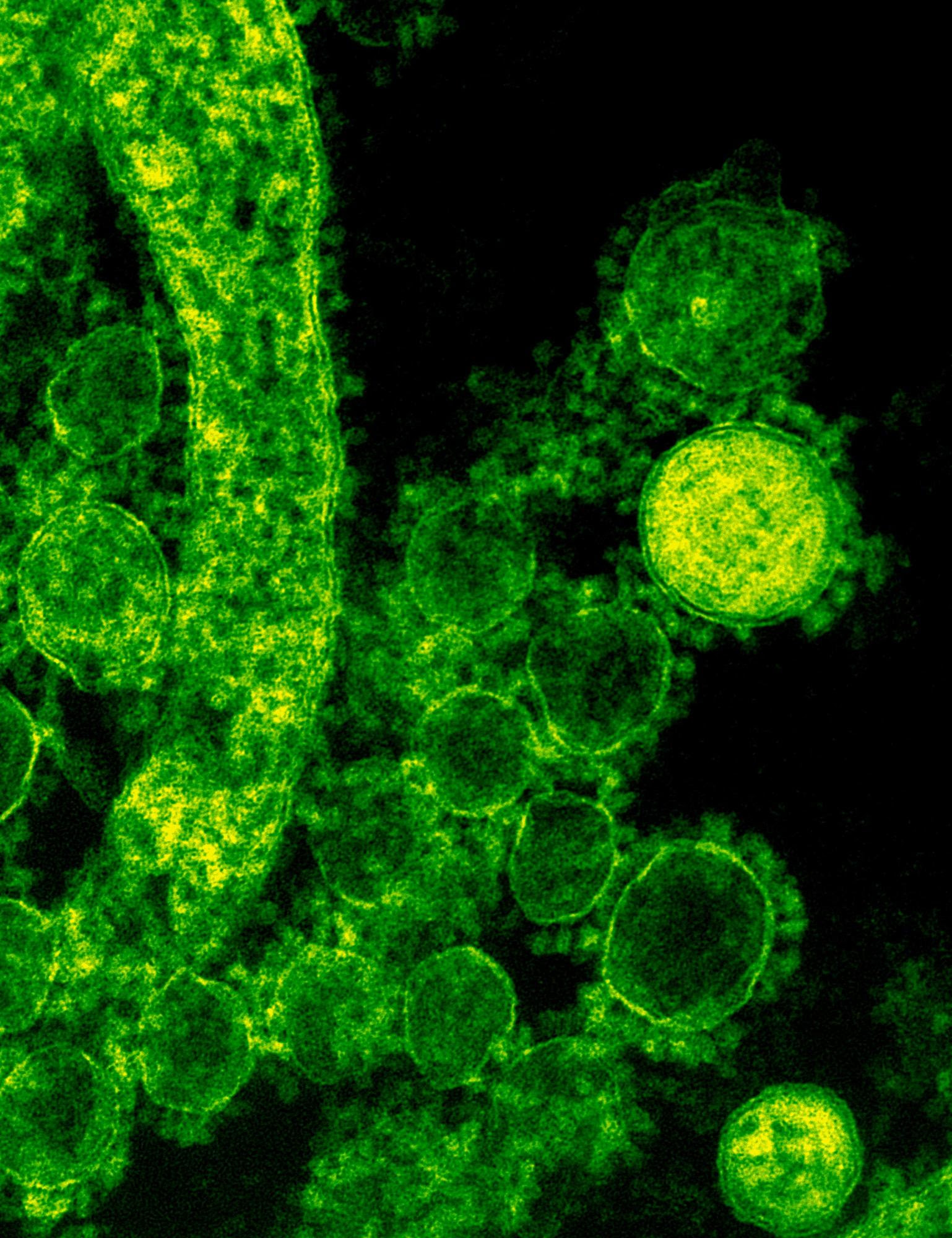
Stabilized Recombinant Coronavirus Spike (S) Proteins and Their Use as Immunogens
Colorized transmission electron micrograph showing particles of the Middle East respiratory syndrome coronavirus that emerged in 2012. Credit: NIAID
Coronaviruses (CoVs) can cause severe respiratory disease with high fatality rates in humans. Currently, there are no effective prophylactic or therapeutic measures, and because other CoVs are poised to emerge as new human pathogens, there is a need to define a general CoV vaccine solution.
NIAID researchers have developed a novel CoV spike (S) protein vaccine antigen that uses protein engineering to stabilize S in its prefusion conformation, preventing structural rearrangement, and exposing antigenically preferable surfaces. This technology has been applied to several CoV spikes, including those from human-relevant viruses such as HKU1-CoV, severe acute respiratory syndrome (SARS)-CoV, and Middle East respiratory syndrome (MERS)-CoV. Particularly for MERS-CoV, stabilized S proteins have been shown to elicit superior neutralizing antibody responses up to 10-fold higher in animal models and have protected mice against lethal MERS-CoV infection. Moreover, this technology could be delivered by other platforms, such as mRNA.
Read more about this exciting licensing opportunity: https://www.ott.nih.gov/























.png)











No hay comentarios:
Publicar un comentario